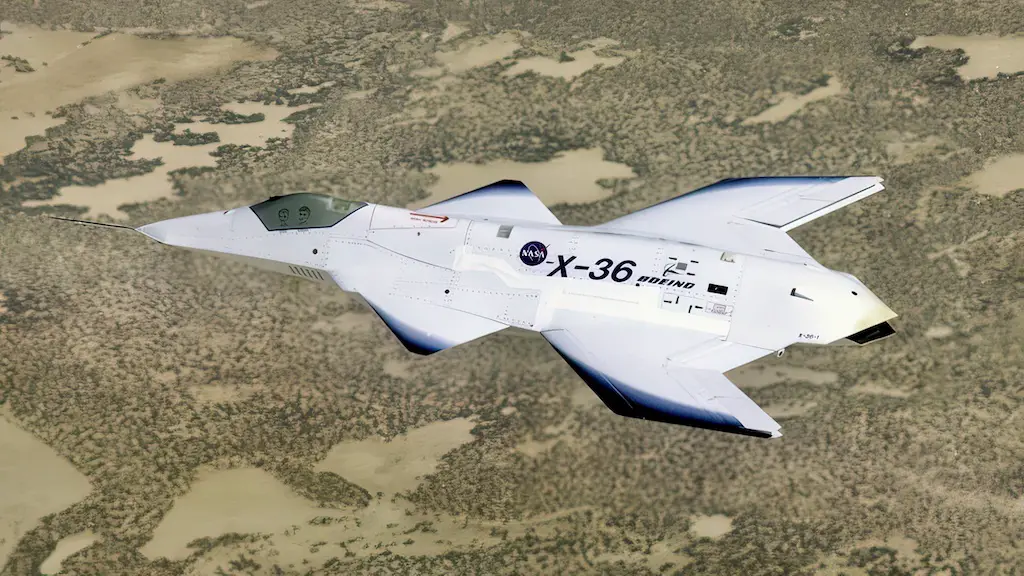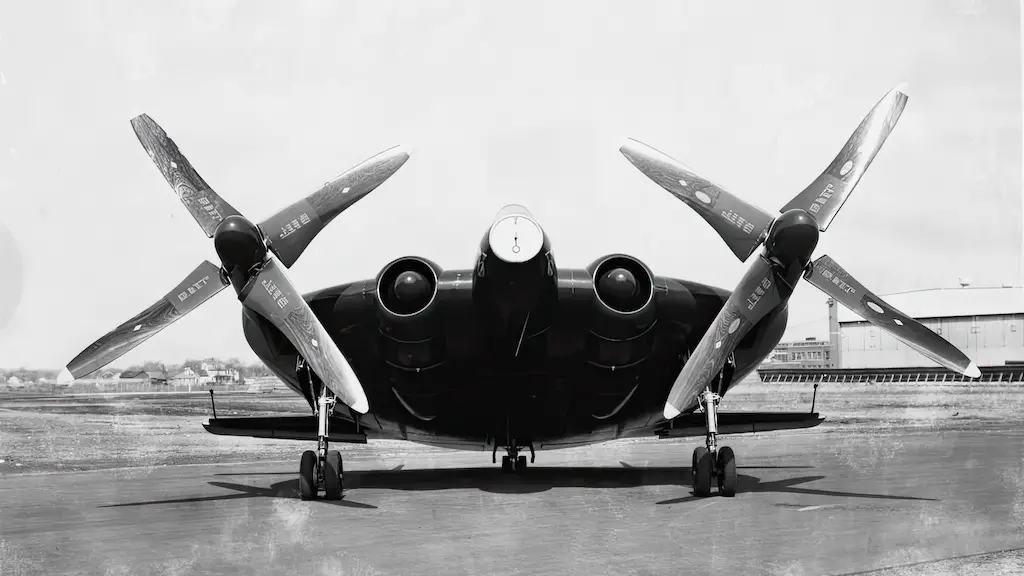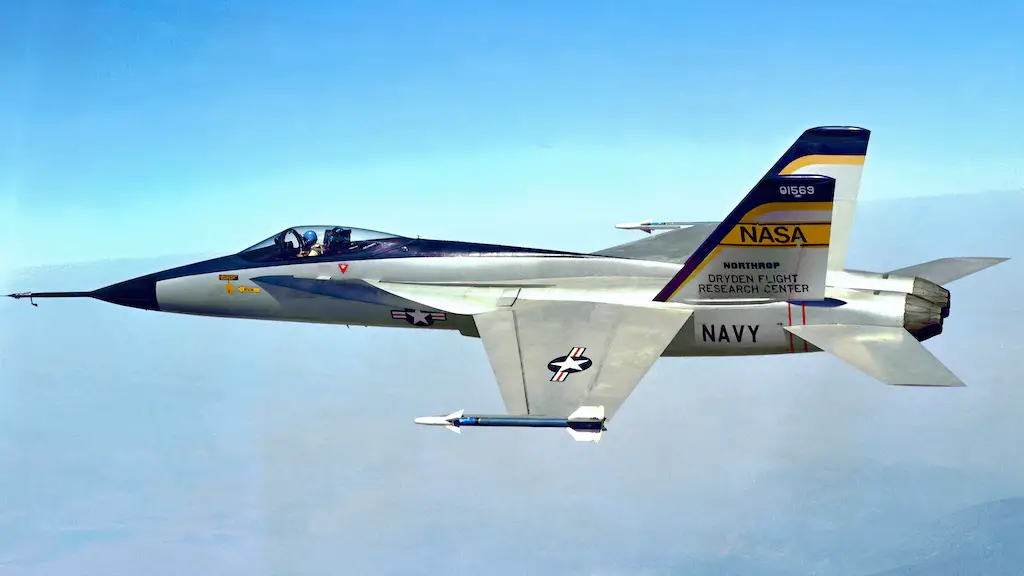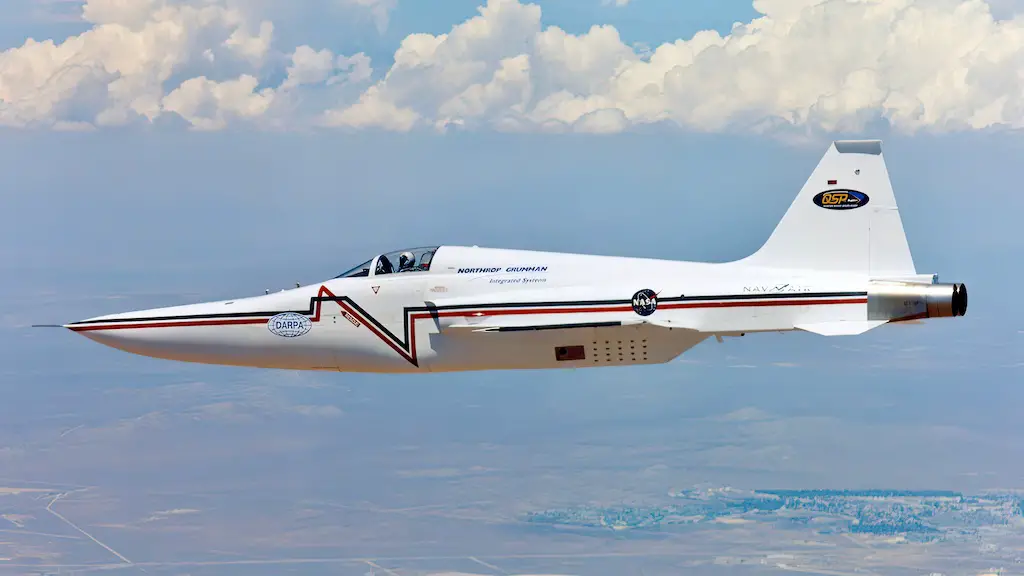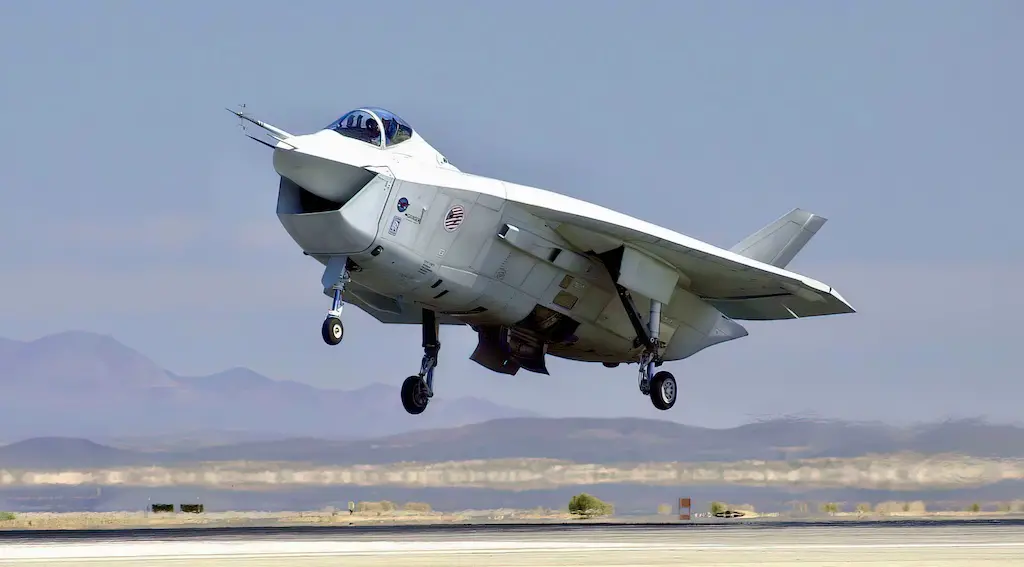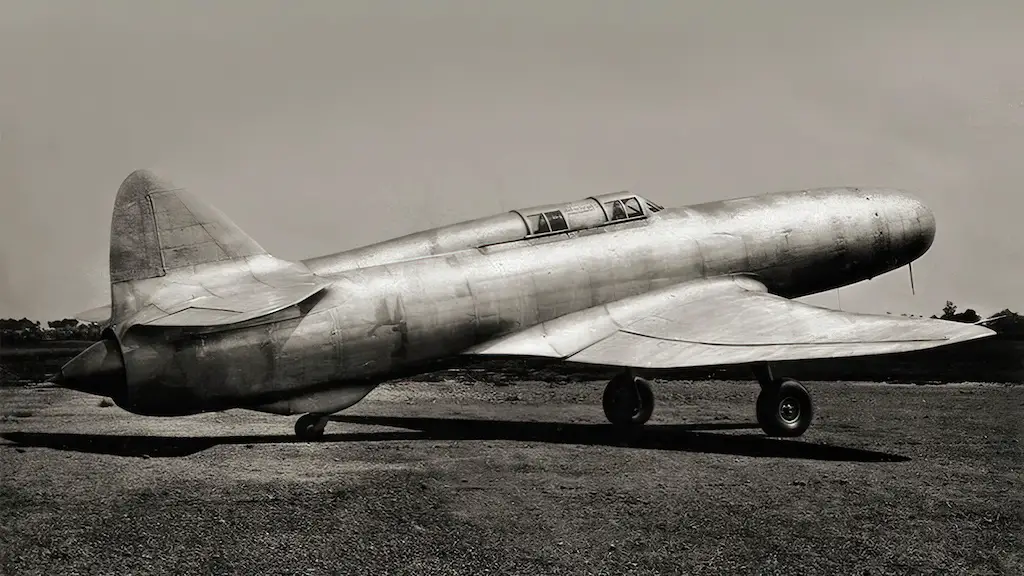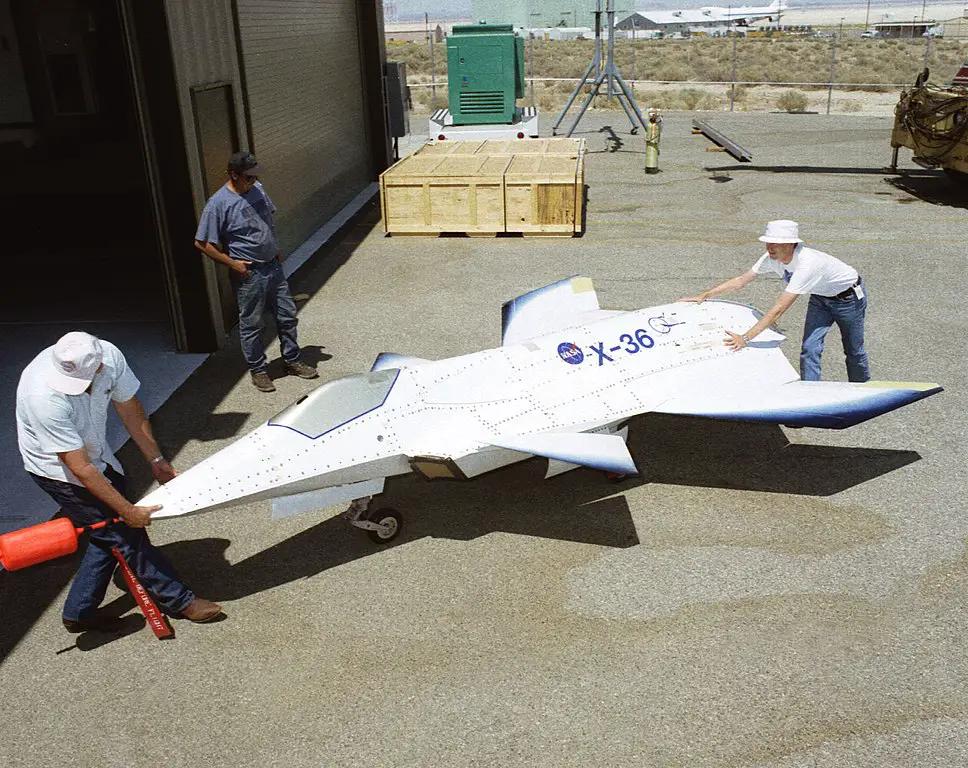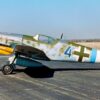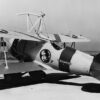This unusual aircraft resembles the F-22 but lacks vertical stabilizers and has some peculiar wings. At least from the top, there is a strong likeness between the nose and the “canopy.” However, one look at the back of the aircraft, it becomes clear that it’s nothing like any other American design because it is missing a tail.
Development
At the NASA Dryden Flight Research Center in Edwards, California, the NASA/Boeing X-36 Tailless Fighter Agility Research Aircraft finished a 31-flight research program in November 1997. Utilizing cutting-edge technologies, the X-36 project team created and tested the tailless fighter concept to increase the maneuverability and durability of potential future fighter aircraft. As a result, all project goals were met or exceeded by the X-36 program.
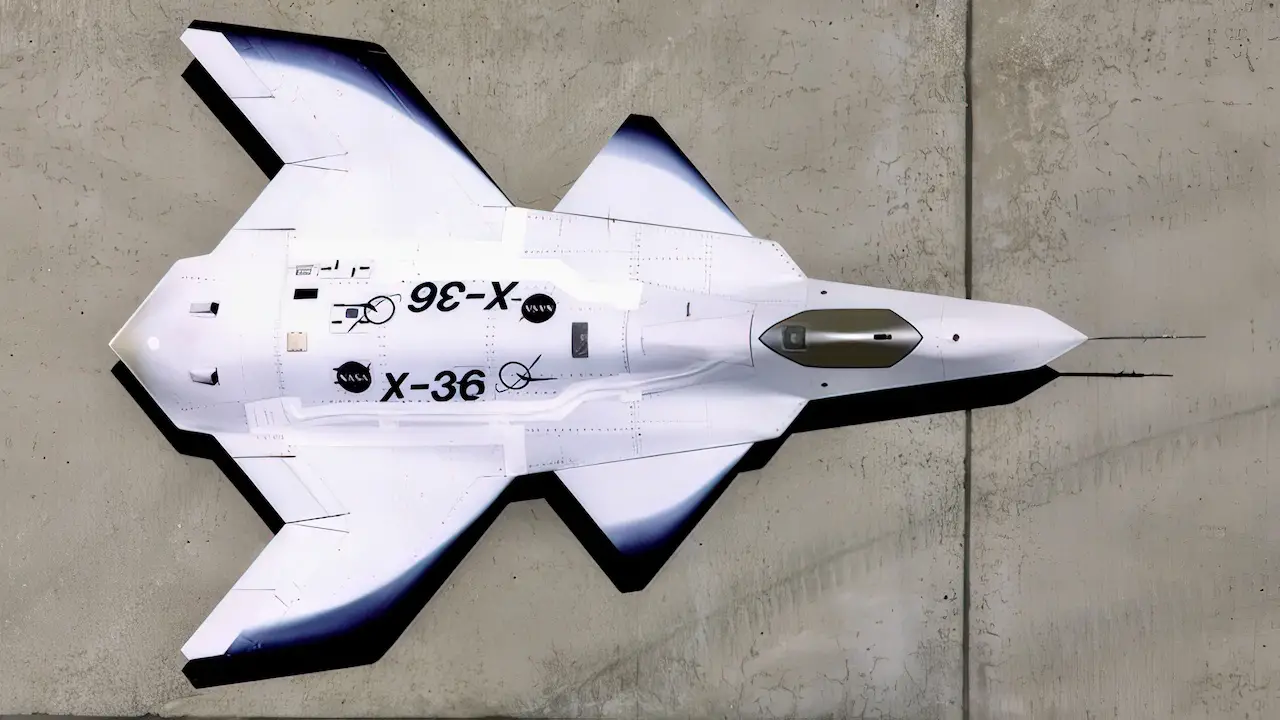
As a follow-up project, the Air Force Research Lab (AFRL) hired Boeing to test-fly its Reconfigurable Control for Tailless Fighter Aircraft (RESTORE) software. This was done to show how easily the neural-net algorithm could be modified to account for damage or malfunction of the effectors, such as the flaps, ailerons, and rudder, while the aircraft was in flight. In December 1998, two RESTORE research flights were conducted, demonstrating the efficacy of the software strategy.
Design
The X-36 is a 28 percent scale model of a potential configuration for an advanced fighter aircraft. The X-36 was constructed by Boeing Phantom Works in St. Louis, MO, in collaboration with NASA Ames Research Center in Moffett Field, CA. It was built to fly without the conventional tail surfaces found on most aircraft.
Instead, split ailerons, an advanced thrust-vectoring nozzle, and a canard forward of the wing are used to provide directional control. In addition, an innovative, single-channel digital fly-by-wire control system that was created using certain commercially available components stabilizes the X-36, which is unstable in both the pitch and yaw axes.
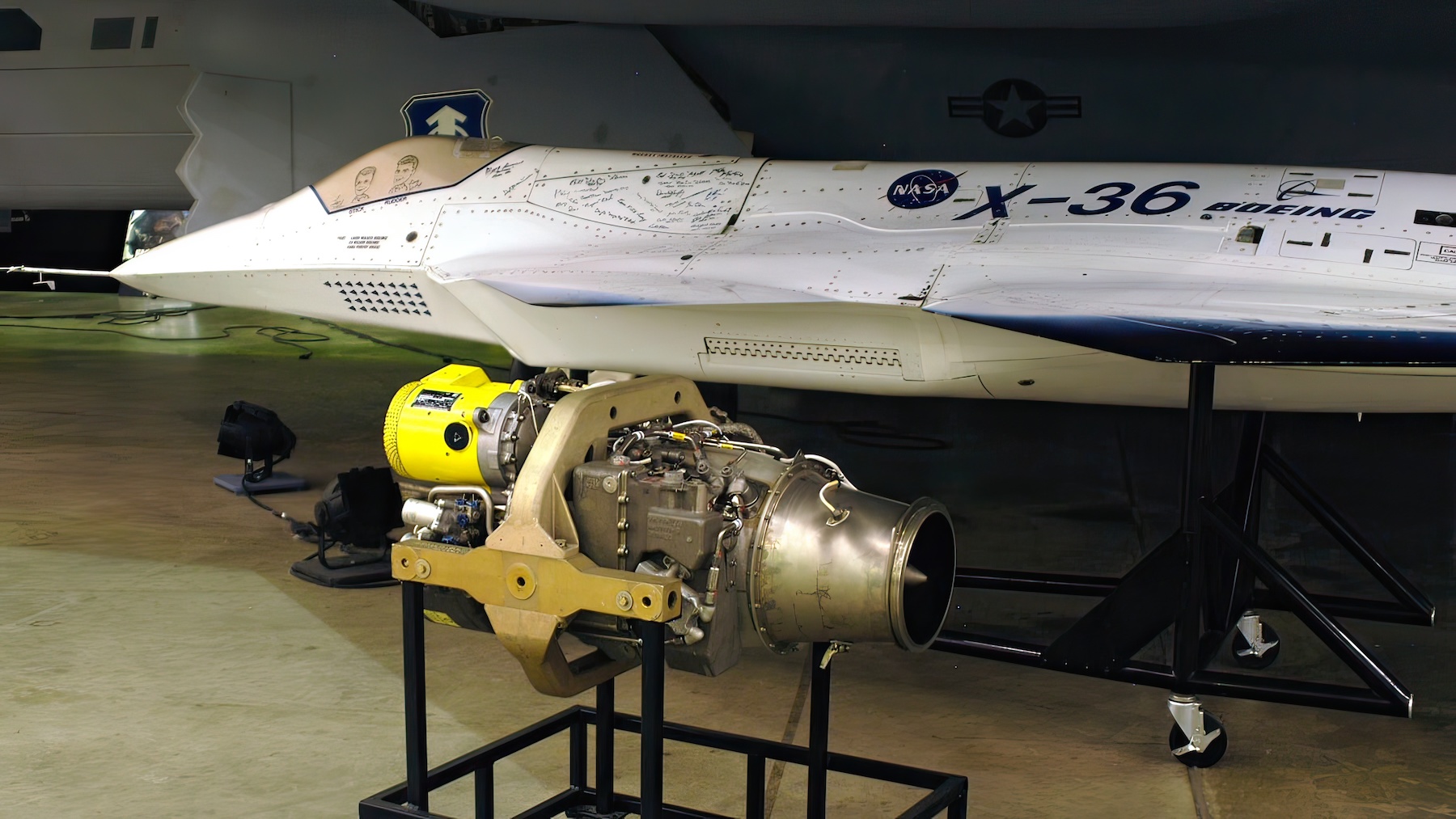
The X-36 prototype weighed roughly 1,250 pounds. It has a slightly over 10 feet wingspan and measures 19 feet long by three feet high. The thrust produced by a Williams International F112 turbofan engine is 700 pounds. A typical research trip takes 35 to 45 minutes from takeoff to landing.
Pilots?
In some pictures, two faces can be seen inside the “canopy”; however, they are drawn on. The two faces are Larry Walker, who served as the program’s first pilot, and Gary Jennings. Two more pilots are on the opposite side: Ed Wilson from Boeing and Dana Purifoy from NASA.
The X-36 is remotely operated by a pilot in a ground station virtual cockpit using a video camera positioned in the nose of the vehicle (and an on-board microphone). The pilot has good situational awareness thanks to a typical fighter-type head-up display (HUD) and a moving-map representation of the vehicle’s location within the range.
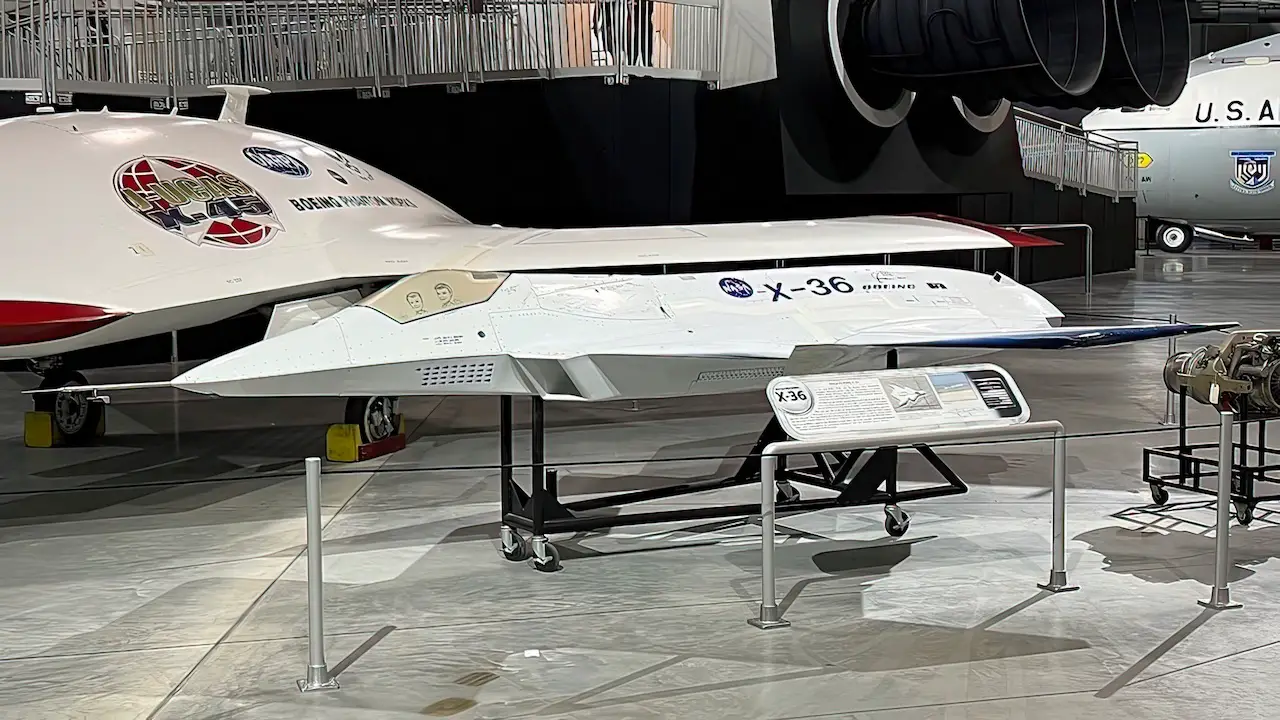
This “pilot-in-the-loop” method does away with the necessity for pricey, intricate autonomous flight control systems as well as the dangers connected with their incapacity to handle unanticipated or unexpected events while in flight.
Performance and legacy
The X-36 made its debut on May 17, 1997, and on November 12, 1997, the original program ended with its final flight. During those 25 weeks, 31 safe and successful research flights totaling 15 hours and 38 minutes in flying time were conducted utilizing four different flight control software versions. With a maximum angle of attack of 40 degrees, the aircraft ascended to a height of 20,200 feet.
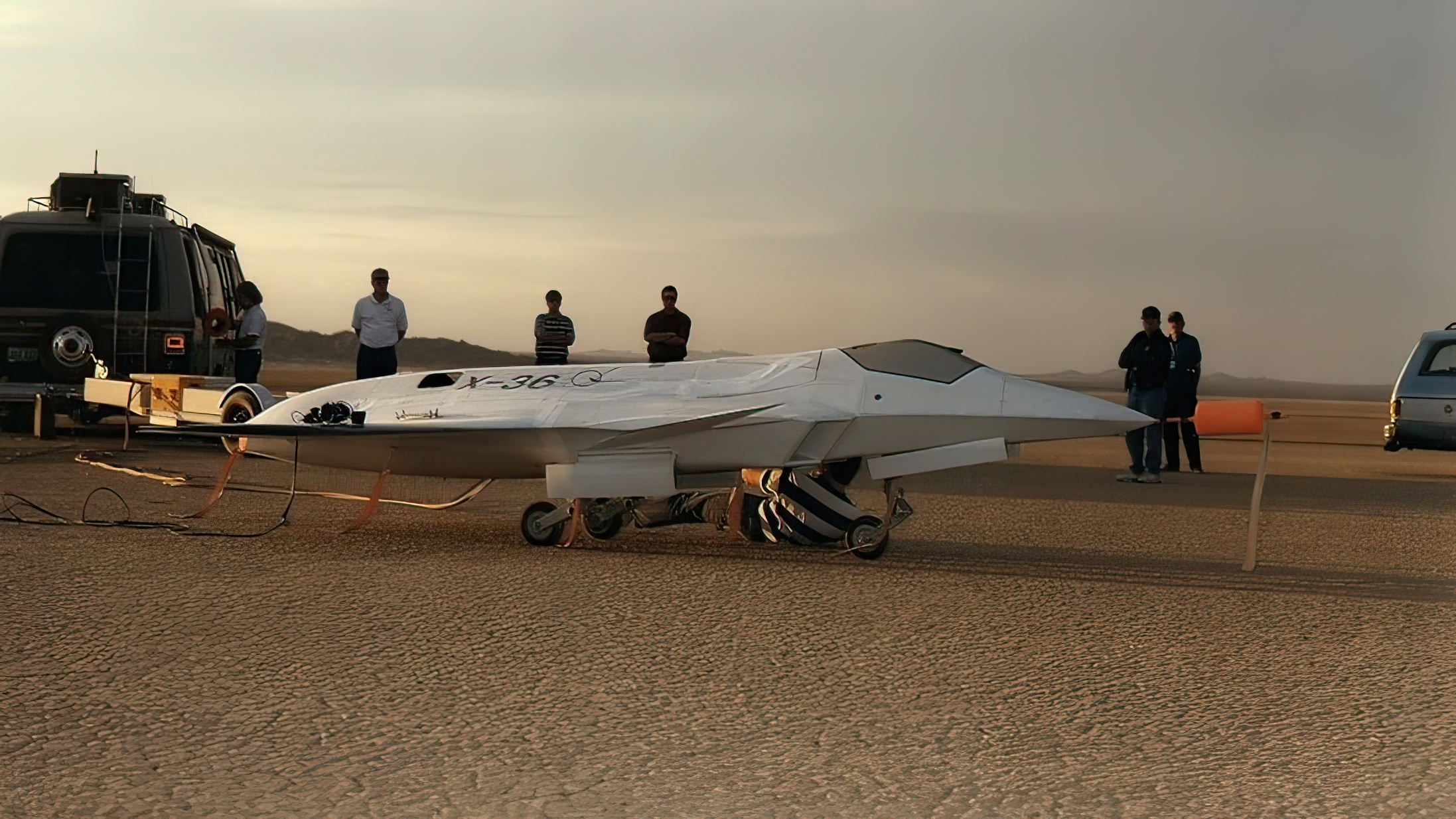
The team working on the X-36 project tested the aircraft’s agility at both high and low speeds and angles of attack. The X-36 was an extremely agile aircraft with a speed envelope that could reach up to 206 knots (234 miles per hour); it handled well at both ends of the speed envelope.
Two flights for the RESTORE programs continuation included adaptive neural-net software and the program’s initial, tested control laws. The reconfigurable control method was faced with several in-flight simulated control surface failures. Each time, the software correctly made up for the issue and made it possible for the aircraft to be flown safely despite the compromised state.

